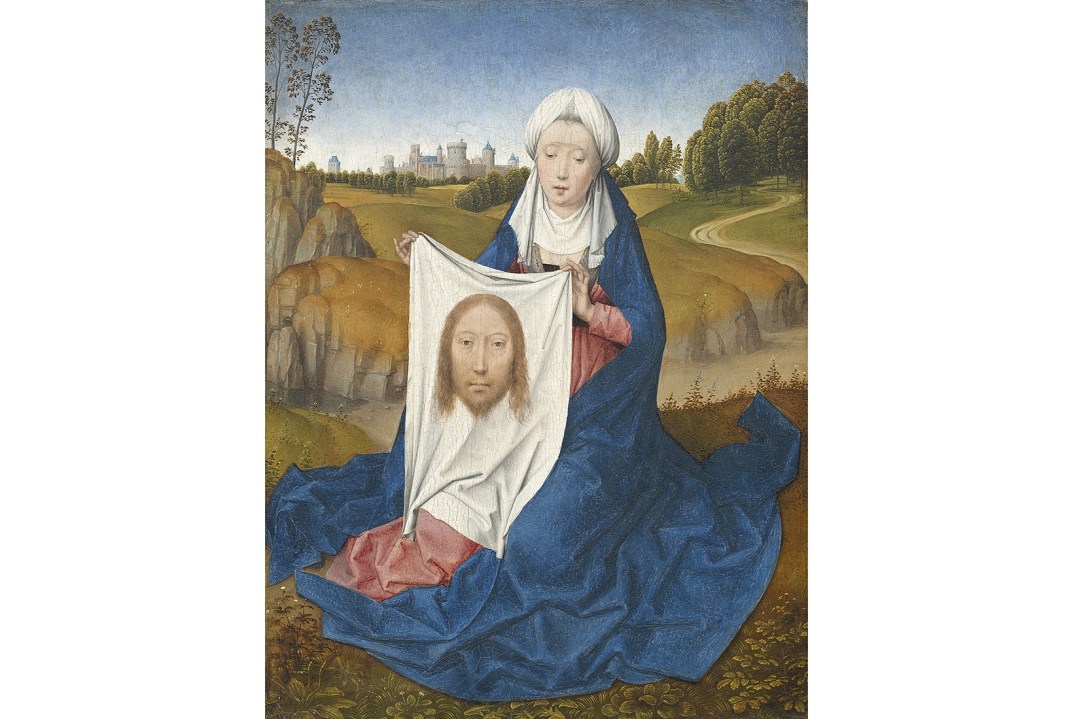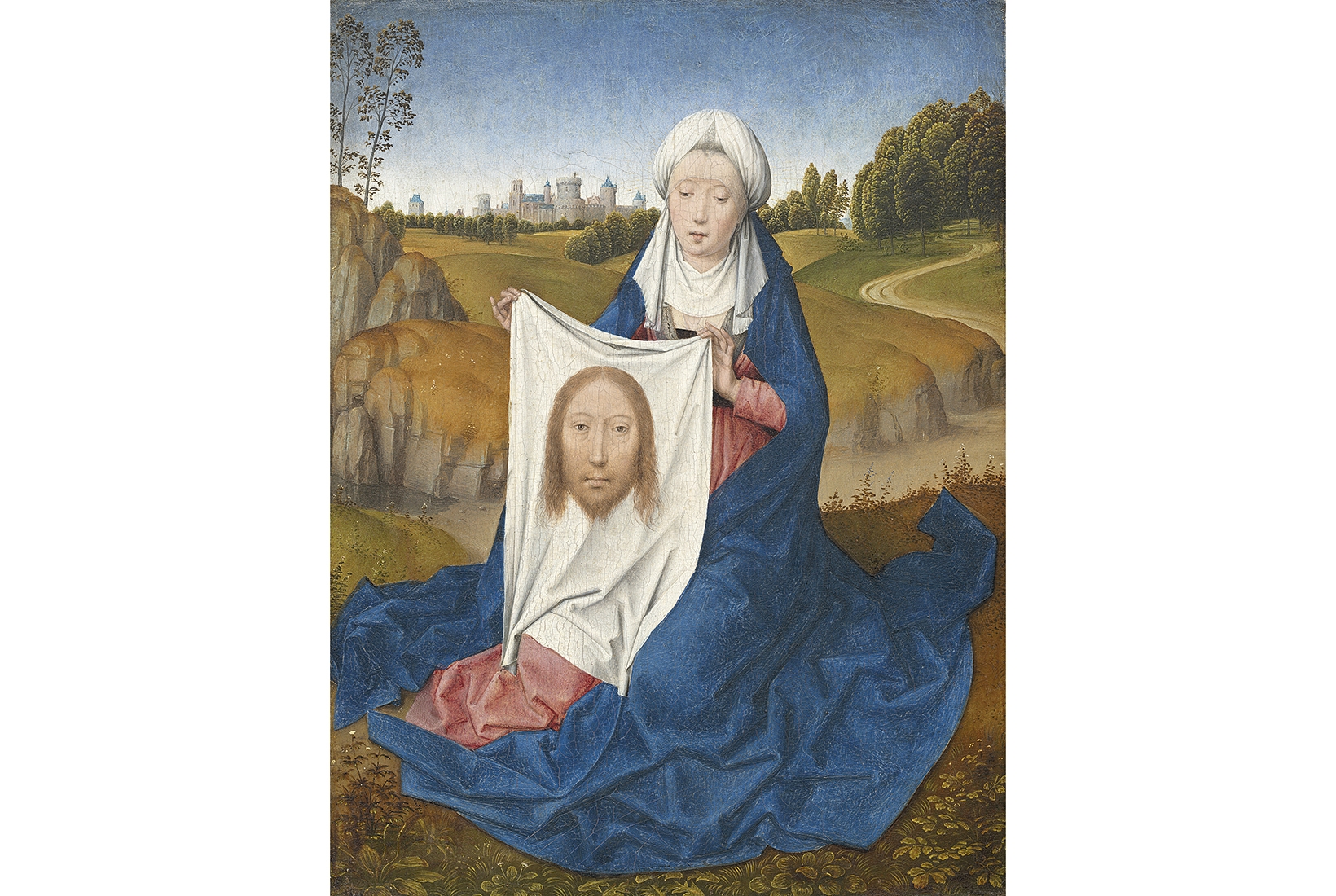Earlier this year, Saint Veronica went viral. A tweet observing that every painting of the saint made her look like a merchandise seller at the Crucifixion was liked more than 35,000 times and retweeted more than 6,700 times. Not bad for a first-century saint. I disagree slightly. Veronica doesn’t strike me so much as a proto T-shirt tout, more as an early Christian super-fan. ‘I touched the hem of his garment.’ ‘Yeah? Well, I literally mopped the sweat from his brow.’
The Sudarium of Saint Veronica is one of art history’s more peculiar subjects. While some saints and their attributes are easy to confuse (Tau? Sword? Saw? Tongs?), if there’s a lady in a painting holding up a square of linen scrim printed with the face of Christ, there’s no doubt she’s St V. A sudarium is a sweat cloth. Sudor: Latin, sweat. (Not to be confused — as this undergraduate art historian embarrassingly did — with sudatorium — the steam-room in a Roman bath.) More decorous accounts refer to Veronica’s veil. Specifically, the sudarium is the cloth with which Veronica wiped the face of Christ as he laboured under the weight of the Cross on the road to Calvary and on which his features were eternally impressed. (Ver: true, icon: image.) In the Canterbury Tales, Chaucer’s Pardoner wears a ‘vernycle’, a pilgrim’s badge of Christ’s face, sewn into the cloth of his cap.
The original sudarium — take this with a pinch of laundry flakes — was hidden within a pillar of St Peter’s. Some say the relic survived the Sack of Rome, others that it was never there at all. The Sudarium and the Turin shroud are both examples of acheiropoieta, icons made without human hands. When a barista discovers the face of Christ in the foam of a cappuccino or burns a Jesus into the top of the toast, he is an inheritor of a rich iconographic tradition.









Comments
Join the debate for just £1 a month
Be part of the conversation with other Spectator readers by getting your first three months for £3.
UNLOCK ACCESS Just £1 a monthAlready a subscriber? Log in